Description
IMPORTANT NOTES
- UPDATE YOUR FIRMWARE: Please upgrade the firmware on your Axe-FX III. and make sure to use the latest version of Axe-Edit III before installing this preset. If your firmware is not up to date, this preset may not load.
- EVERYTHING IS STOCK: This preset does not use third party IR’s. If you’d like to experiment with 3rd party IR’s, feel free to do so in the cab block.
- FC FUNCTIONALITY BUILT IN: This preset was built to work with the Fractal FC-12 and an external expression pedal plugged into the ‘Pedal 1’ input. See the Per-Preset overrides and FC assignments below.
- CYGNUS UPDATE: We have updated the amp block for the Cygnus firmware update. You’ll need to be running at least firmware 16.00 for this update.
INCUDED PRESETS
- DLX VERB WT (SC) – this preset is voiced for single coils and low-output humbuckers
- DLX VERB WT (HB) – this preset is voiced for more traditional humbuckers
Both presets are the same except for the amp, EQ, and control switch settings. See the ‘Control Switch’ section below for more info.
SIGNAL FLOW AND EFFECTS
- Input 1 (the Input Noise Gate is turned off to save CPU).
- Compressor 1
- Channel A: JFET Compressor (1176 Style Comp): set to be somewhat transparent, general use comp.
- Channel B: Studio FF Compressor 1: set to be somewhat transparent, general use comp.
- Channel C: Dynamicomp (Dynacomp): Lots of compression and squish.
- Channels D: Optical Compressor (LA-2A style)
- Pitch 1
- Channel A: Dual Chromatic (POG type effect, subtle)
- Channel B: Dual Chromatic (POG, more pronounced)
- Channel C: Crystal Echos (Shimmer)
- Channel D: Classic Whammy (Octave up Whammy – the ‘Control’ parameter is not assigned to an external pedal, so assign the control to an expression pedal and have some fun)
- PanTrm 1
- Channel A : Tremolo – fixed tempo
- Channel B: Tremolo (1/4 Trip note sync)
- Channel C: Bias Trem – Bradford’s ramping trem settings (based on LFO1a)
- Channel D: Tremolo (1/16 note sync – set for a choppy trem sound)
- Drive 1 – First Stage OD
- Channel A: Timothy 2 (Timmy)
- Channel B: Tone of Kings (Analogman King of Tone – low gain)
- Channel C: FET Boost (set up to mimic a Klon)
- Channel D: Jam Ray (Vemuram Jan Ray – low gain)
- Drive 2 – Second/Third Stage OD
- Channel A: T808 OD – Tube Screamer
- Channel B: Tone of Kings (Analogman King of Tone, medium drive)
- Channel C: Ruckus Ge (Suhr Riot)
- Channel D: Shimmer Drive
- Vol/Pan 1 (the volume parameter is mapped to EXTERNAL 1)
- NOTE: The ‘Volume’ parameter is NOT MAPPED. You’ll need to map this parameter to an expression pedal if you’d like to use the volume block – we recommend setting it to ‘External 1’. To set this up, go to ‘SETUP -> MIDI/Remote’. In the MIDI/Remote menu, navigate to ‘External’. From there, set ‘External Control 1’ to whatever you are using for your expression pedal.
- Amp 1: Deluxe Verb Normal (Fender Deluxe Reverb)
- Only channel A is set up for each preset
- Cab 1: (only channel A is set up):
- Cab 1:1×12 Deluxe Verb 57 A (Factory 1, 279)
- Cab 2: 1×12 Deluxe Verb 121 B (Factory 1, 282)
- Graphic EQ 1 – always on EQ
- Only channel A is set up
- Chorus 1
- Channel A : Dimension
- Channel B: Japan CE-2
- Channel C: Analog Stereo
- Channel D: Dimension 1 (more pronounced chorus effect)
- Delay 1: (Quarter and 8th note delays)
- Channel A: Analog Stereo (1/4 delay with a wide stereo field)
- Channel B: Stereo Tape (1/4 delay with a wide stereo field)
- Channel C: Analog Stereo (1/8 delay with a wide stereo field)
- Channel D: Stereo Tape (1/8 delay with a wide stereo field)
- Delay 2: (All dotted eighth note delays)
- Channel A: Stereo Mind Guy
- Channel B: Vintage Digital
- Channel C: 2290 w/ Modulation
- Channel D: Stereo Tape
- Delay 3: (All dual stereo delays)
- Channel A: Stereo Mind Guy (1/8 and Dotted 8th in stereo)
- Channel B: Stereo Tape (Dotted 8th and Quater in stereo)
- Channel C: Stereo BBD (Quater and Quater Triplet in stereo)
- Channel D: Vintage Digital (Quater and Dotted 8th – huge washy delay for swells)
- Reverb 1: (‘Normal’ verbs in parallel)
- Channel A: London Plate
- Channel B: Recording Studio C
- Channel C: Large Hall
- Channel D: Medium Plate
- Reverb 2: (Big ambient verbs)
- Channel A: Stratocumulus
- Channel B: Cirrocumulus
- Channel C: Deep Space
- Channel D: Nimbostratus
- Plex Delay 1: (Plex verb for huge swells and ambient reverb)
- Channel A: Plex Verb (big ambient reverb for swells)
- Channel B: Plex Verb (ambient reverb – not quite a huge as channel A)
- Channel C: Shimmer Verb (shimmer)
- Channel D: Plex Shimmer (shimmer – not as smooth as Channel C)
- Out 1
CONTROL SWITCH 1 (CS1)
Control Switch 1 (CS1) is set to change amp gain settings. This essentially gives you another drive – pure amp overdrive.
In order to adjust these settings, on the amp block, right-click on ‘Input Drive’. Adjust the ‘Min’ and ‘Max’ values to set your desired amount of drive for when the button is off (Min) or on (Max).
We’ve mapped it to a button labeled ‘Amp Gain’ in the ‘Effects’ layout (layout 8) if you use an FC-12. See the ‘Per-Preset Mapping and Overrides’ for more info.
You can control which scenes have the Amp Gain button on using the ‘SC Per Scene’ tab in the ‘Controllers’ menu.
SCENES
The following scenes are set up for instant access to various tones:
- Scene 1: CLEAN. Basic clean tone with verb and quarter delay
- Scene 2: DRIVE. Light Drive (Drive 1A)
- Scene 3: DRIVE+. Med Drive (Drive A, Control Switch 1)
- Scene 4: P&W LEAD. Big drive (Drive sA + Control Switch 1) with big verb and dual stereo delay (1/8 + 1/8d).
- Scene 5: AMBI CLEAN. Clean tone with stereo delay (1/4 + 1/8d) and big reverb.
- Scene 6: TREM CLEAN. Clean tone with tremolo and delay.
- Scene 7: POG LEAD. Same as Scene 4 but with the Pitch effect (Channel B, POG)
- Scene 8: SWELLS. These swells are majestic. Engages all three delays (Delay 3, Channel D is what makes this one go). Also engaged are the Plex Delay, big reverb, and Pitch (Channel C). The pitch block gives a shimmer effect. If you want a more subtle pitch effect, try channels A or B in the pitch block.
USAGE NOTES
STEREO
Everything after the amp runs in stereo. If you are running mono, you’ll need to sum your signal to mono before going to FOH (if you only use the Left output, won’t hear some of the delays at all).
The easiest way to make this adjustment is in the ‘Setup’ menu:
- Choose ‘Setup’, and select ‘I/O’
- In OUTPUT 1 CONFIGURATION (choose the physical output you are using), change the ‘Mode’. Select ‘STEREO’ if you are running in stereo. Select ‘’SUM L+R’ if you are running mono. This will convert your output to mono and sum the stereo image. This will also cause all your presets to output in mono, as it is a global setting.
BLOCK CHANNELS
For almost all blocks, we’ve set up multiple channels to give you different options for any given effect. Feel free to experiment and find the sounds you like best. However, not all blocks have all four channels set up – some have just couple, and some only one. See the Signal Flow section above to see what is set up in what channel for any given block.
DRIVES
All three drive blocks increase in gain as you go up, so Drive 1 is lower gain than Drive 2, etc. Within each drive block, all four channels are set up to give you different flavors of the same gain structure. Every guitar reacts differently with drives (and amps), so it’s good to have options. We’ve chosen our personal favorites within each block and left them in Channel A, but feel free to experiment with your setup to find what you like best.
In the Drive 2 block, channels A and B are 2nd stage drives, and channels C and D are 3rd stage drives.
DELAYS
We’ve used all four channels of three delay blocks (that’s 12 different delays!) . Each delay block runs in parallel with the others so the delays don’t run into each other.
Delay blocks are separated into different delay times. For example, Delay 1 is all quarter or 1/8th note delays. Delay 2 is all dotted 8th noted delays, and Delay 3 is all stereo dual delays. Delay three is a bit different because each channel will give you different rhythmic delays, and Channel D is set to give you a huge wash for swells.
The delays run between the amp and cab to simulate an effects loop in an amp. This means the cabinet will filter the tone of the delays, making them a bit less clean/pristine (we prefer the way they sound this way). Feel free to move them all after the cab (but before the verbs) to experience them in a different way.
REVERB
We’ve set up reverbs the same way as delays – each reverb block contains four versions of the same type of reverb (normal and big).
Reverb blocks 1 and 2 give you ‘normal’ and ambient reverbs respectively, but the PlexDly block will also give you ambient reverbs. Experiment with these to find your favorite sounds.
PER-PRESET MAPPING AND OVERRIDES
This preset integrates with the Fractal FC-12. We’ve set up Per-Preset overrides for both effects and scenes, and we’ve mapped them to Layouts 7 (Perform 1) and 8 (Perform 2). If you have an FC-12, the following assignments should be plug-and-play. Layout 7 will be your scenes and Layout 8 will be individual effects, plus swells.
HERE ARE THE PER-PRESET MAPPINGS AND THE BUTTONS THEY’RE ASSIGNED TO OVERRIDE
PP1: Scene 1: CLEAN – Layout 7 Button 2
PP2: Scene 2: DRIVE – Layout 7 Button 3
PP3: Scene 3: DRIVE + – Layout 7 Button 4
PP4: Scene 4: P&W LEAD – Layout 7 Button 5
PP5: Scene 5: AMBI CLEAN – Layout 7 Button 8
PP6: Scene 6: TREM CLEAN – Layout 7 Button 9
PP7: Scene 7: POG LEAD – Layout 7 Button 10
PP8: Scene 8: SWELLS – Layout 7, Button 11
PP9: Drive 1A – Layout 8, Button 2, ‘Timmy’
PP10: Drive 2A – Layout 8, Button 3, ‘808’
PP11: Drive 3A – NOT ASSIGNED (Effect not used in this preset)
PP12: Reverb 1 – Layout 8, Button 5, ‘Plate Verb’
PP13: Reverb 2 – Layout 8, Button 6, ‘Cloud Verb’
PP14: PlexDly1 – NOT ASSIGNED
PP15: Delay 1 – Layout 8, Button 8, ‘1/4 DLY’
PP16: Delay 2 – Layout 8, Button 9, ‘1/8d DLY’
PP17: Delay 3 – Layout 8, Button 10, ‘DualST DLY’
PP18: Delay 4 – NOT ASSIGNED (Effect not used in this preset)
PP19: TremPan 1 – Layout 8, Button 12
PP20: Chorus 1 – Layout 8, Button 11
PP21: Pitch 1 – NOT ASSIGNED
PP22: Scene 8/1 Toggle – NOT ASSIGNED
PP23: CS1 – Layout 8, Button 4, ‘Amp Gain’
MAKING ADJUSTMENTS FOR YOUR SETUP
SETTING THE PRESET UP FOR YOUR GUITAR
All guitars are different, so you may want to make changes to suite your playing style and guitar. To adjust the preset for your guitars, the primary controls to adjust would be:
- Input Drive (and/or Input Trim). If the clean sounds from this preset are too dirty, lower the input drive and/or trim. Do the opposite if you want more gain. This preset is meant to be on the edge of breakup at it’s cleanest settings (otherwise the drives won’t stack properly).
- EQ settings (amp block – basic). Once the desired gain staging is set, the next adjustment would be the amp EQ settings.
- GEQ settings (Graphic EQ block). The 5-band Graphic EQ allows you to make simple changes to the overall tone. Feel free to adjust these to your liking. Since this is a passive EQ, you can make rather large changes to the faders.
- Output EQ settings (amp block). The Graphic EQ on the amp block is a great way to make final EQ adjustments. We’ve set it to ‘Post P.A.’, which means the EQ settings will not be affected by the Power Amp section.
ADJUSTING THE OVERALL LEVEL OF THE PRESET
The Axe FX III offers very useful tools to check overall level of individual presets and blocks. In the Output block you can monitor the overall output level. You can also monitor levels of each block individually from the front screen of the Axe FX.
We’ve set this preset up so that the loudest settings peak around 0db (or a bit above). If you’d like to adjust the level up or down (to match it with other presets), we recommend adjusting one of the following:
- Level (amp block – basic). This will adjust the overall level of the preset up/down. Avoid using the ‘Master Volume’ control, as this will change the tone of the amp.
- Level (cab block). This will also adjust the overall level of the preset up/down.
CHANGELOG
Version 4.0: 2021-05-06
- Updated the amp block for Cygnus firmware
Version 3.0: 2020-09-01
- Changed: Drive block settings (adjusted for new drive settings in FW 13.0)
- Changed: Reverb block settings (adjusted to use less DSP – they should sound the same otherwise)
- Changed: Drive settings for Scenes (better bigger drive tones using the control switch)
- Changed: FC12 mapping (access to more effects, different naming)
Version 2.0: 2020-05-09
- Changed: Amp settings (better tone)
- Added: Control Switch settings and FC-12 mapping (lets you increase amp gain with a footswitch for awesome sounding overdrive)
- Added: Graphic EQ block – better tone, and easier adjusting for individual guitars
Version 1.1: 2019-12-05
- Added: Speaker impedance curve (amp block)
- Changed: Output compression type (amp block)
- Changed: Amp and drives settings (better tone)
Version 1.0 (initial Release): 2019-07-08


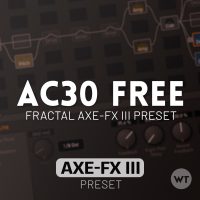



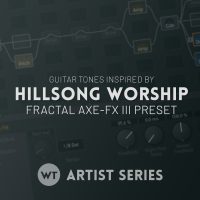



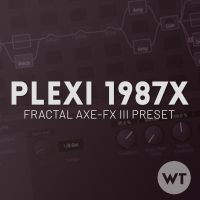





























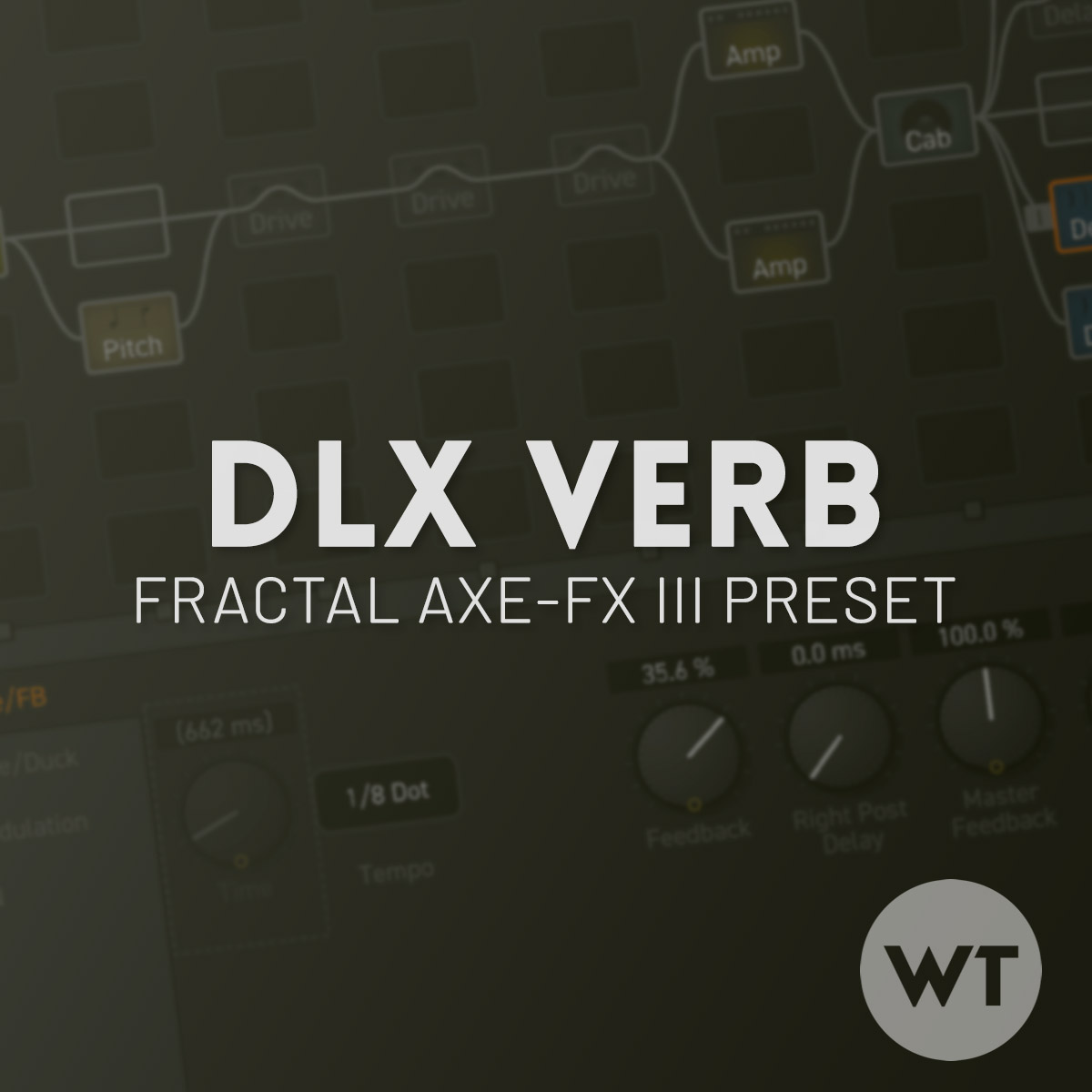



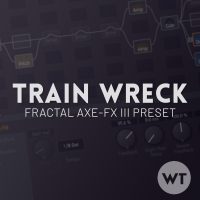


Reviews
There are no reviews yet.